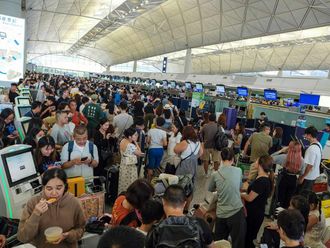Dubai: Software piracy losses in the Gulf states fell only by 2.18 per cent in 2015 to $897 million (Dh3.29 billion) compared to $917 million in 2013, despite a plunge of close to 20 per cent in computer shipments.
According to the 2016 Global Software Survey by the BSA |The Software Alliance in partnership with International Data Corporation, the UAE is still the only Arab country ranked among the lowest-piracy countries in the world.
IDC said that computer shipments to the Gulf last year stood at 3.8 million units, down from 7.7 million in 2013, a decrease of 19.15 per cent, but UAE’s software piracy rate fell only by two percentage point to 34 per cent last year.
In the Middle East and Africa, software piracy fell by two percentage points to 57 per cent in 2015.
Megha Kumar, senior research manager for software at IDC, told Gulf News that software piracy is decreasing in the MEA region but is yet to reach the levels similar to Europe or the US.
“A fall in the price of PCs does not mean an immediate fall in software piracy. While it does help, in many cases users generally are very ignorant about the need to access genuine software. In part of Africa, of course, it is quite common for users to buy PCs that are not pre-installed with an operating systems and then go about installing software whether it is legit or not.
“We can also not negate peer-to-peer downloads. It is quite common for users to download software of the internet from torrents sites as well. And in certain countries, traders also sell pirated software which adds to the concern,” she said.
The BSA study involves collecting 182 discrete data inputs and assessing PC and software trends in 116 markets.
Out of the 72 markets covered in the study, more than half of the total PC software deployed in 2015 was unlicensed; in 37 markets, 75 per cent or more was unlicensed. There is still much more to be done.
Accompanying the global decline in the use of unlicensed software was a corresponding drop (4 per cent in constant-dollar terms) in the commercial value of unlicensed software, to $52.2 billion compared to $62.71 billion in 2013.
The survey, which canvassed consumers, IT managers and enterprise PC users, reinforces that use of unlicensed software is still high, and that individuals and companies are playing with fire when they use unlicensed software. This is due to the strong connection between cyberattacks and the use of unlicensed software. Where unlicensed software is in use, the likelihood of encountering malware dramatically goes up. And the cost of dealing with malware incidents can be staggering.
In 2015 alone, for example, cyberattacks cost businesses over $400 billion.
Malware is a huge problem for organisations — and one of the main culprits is “unlicensed software”.
Findings of Symantec in its most recent internet Security Threat Report show that more than one million new threats were created each day in 2015. There was a 35 per cent growth in ransomware attacks in 2015 and sixty-five per cent of all targeted attacks in 2015 struck small- and medium-sized organisations.
When it comes to malware, Kumar said that unlicensed software maybe one of the factors but things like insider risk and threat sophistication take precedence. Having legitimate software installed within your organisation does help curb vulnerabilities that maybe exploited. To reduce exploiting vulnerabilities of unlicensed software organisations need to update their software and have patches installed as and when they are released.
“Organisations need to ensure utilise software asset management to ensure users are accessing the right software that are up to date and ensure any older versions that are no longer being supported are not in use. Also, many a times employees end up installing software or procuring software without the knowledge of IT. This form of engagement is more around Shadow IT- while the software may be legit it might not be vetted by IT or be governed by usage and security policies of the organisation. This also creates security risk within the organisation making software asset management and governance solution a necessity,” she said.
The BSA report adds that companies can mitigate cybersecurity risks associated with unlicensed software by purchasing it from legitimate sources, and establishing software asset management (SAM) programs.
“Organisations that effectively deploy SAM will know what’s on their network, and whether it is legitimate and licensed; will optimise their use of software by deploying software that’s the best fit for their businesses; will have policies and procedures in place that govern procurement, deployment, and retirement of software; and will have integrated SAM fully into their business,” the report said.
By proactively combining effective SAM practices with increased employee education, Savas Yucedag, head of SAM and Compliance at Microsoft, told Gulf News that companies can make themselves safer, more cost-effective and more efficient.
Kumar said that it is usually believed that in a ‘cloud consumption’ model, piracy can be reduced but it does not curb peer to peer downloads. While reduced software price can make legitimate software more accessible. It still does not address the fact that many a times consumers do not understand why they need to pay for software. An effort to highlight the use of legitimate and secure software is necessary.
“There need to be awareness around how unauthorised software can create security and privacy issues. Interestingly, it is not just the PC ecosystem but also the mobile ecosystem that faces this challenge as well. Many users tend to “jail break” their phones or compromise the integrity of their operating systems allowing them to install software that is supporting by the actual operating system and not have to pay for the application,” she said.
So, she said that curbing piracy will be an ongoing effort of user education and policies coming into place.










